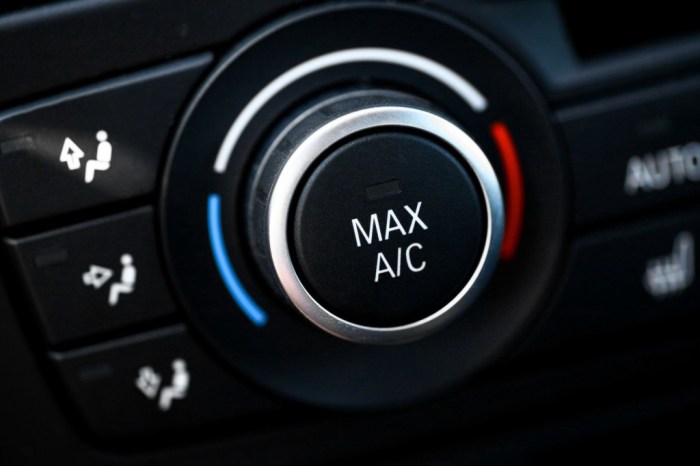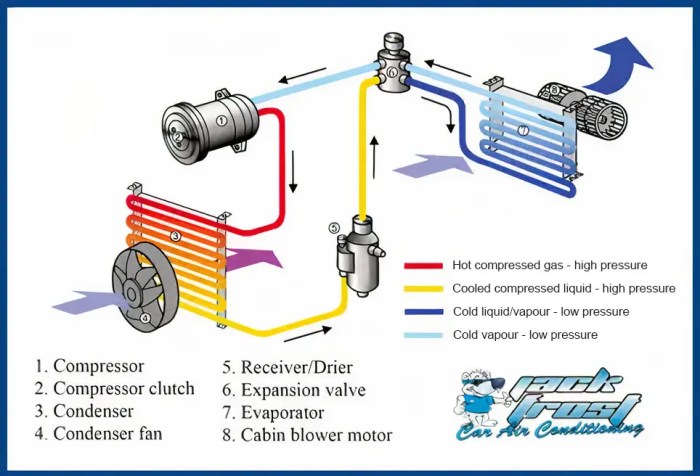New AC Car Price A Comprehensive Guide
Factors Influencing New AC Car Prices

Source: co.ke
New ac car price – The price of a new car with air conditioning is a complex interplay of various factors, ranging from manufacturing costs to economic conditions and regional market dynamics. Understanding these influences is crucial for prospective buyers to make informed decisions.
Manufacturing Costs
Manufacturing costs significantly impact the final price. These include raw materials (steel, aluminum, plastics), labor costs (assembly line workers, engineers), and the cost of the air conditioning system itself, including components like the compressor, condenser, and evaporator. Higher material costs, driven by global commodity prices, directly translate to higher vehicle prices. Similarly, increased labor costs, particularly in regions with higher minimum wages or strong labor unions, add to the overall manufacturing expense.
Currency Exchange Rates
Global car manufacturing involves international trade and supply chains. Fluctuations in currency exchange rates can affect the cost of imported parts and components. A stronger US dollar, for example, can make imported parts cheaper, potentially lowering the final price. Conversely, a weaker dollar can increase the cost of imported components, leading to higher vehicle prices.
Government Regulations and Taxes, New ac car price
Government regulations, such as emission standards and safety requirements, influence manufacturing processes and add to the cost of production. These regulations often necessitate the incorporation of specific technologies or components, increasing the vehicle’s manufacturing complexity and cost. Furthermore, taxes, such as import duties, sales taxes, and excise duties, vary across regions and significantly impact the final price a consumer pays.
Car Features and Their Impact on Cost
Different car features contribute to price variations. Higher-performance engines, advanced safety features (e.g., adaptive cruise control, lane departure warning), premium interiors (leather seats, advanced infotainment systems), and sophisticated technological features (e.g., advanced driver-assistance systems) all increase the manufacturing cost and thus the final price. A basic model with minimal features will naturally be cheaper than a fully loaded luxury variant.
Pricing Strategies of Car Manufacturers
Car manufacturers employ diverse pricing strategies. Some focus on value-oriented pricing, offering competitive prices with basic features. Others adopt premium pricing, emphasizing luxury and advanced technology, justifying higher price tags. Market positioning, brand image, and target customer demographics all influence the pricing decisions of manufacturers.
Price Variations Across Different Car Models and Brands
The price of a new AC car varies considerably depending on the brand, model, and trim level. Understanding these variations is essential for buyers to find the best value for their money.
Price Comparison Across Brands
| Brand | Model | Engine | Price (USD – Example) |
|---|---|---|---|
| Toyota | Corolla | 1.8L | 20,000 |
| Honda | Civic | 2.0L | 22,000 |
| Ford | Focus | 1.5L EcoBoost | 21,000 |
| Nissan | Sentra | 2.0L | 19,000 |
Price Differences Between Entry-Level and Luxury Models
Entry-level models typically prioritize affordability, offering basic features and smaller engines. Luxury models, on the other hand, boast advanced features, more powerful engines, premium materials, and superior comfort, resulting in significantly higher prices. The difference can range from thousands to tens of thousands of dollars.
Price Discrepancies Within the Same Model and Different Trim Levels
Even within the same car model, different trim levels offer varying features and packages, impacting the price. Higher trim levels usually include upgraded features like leather upholstery, advanced safety technologies, and premium sound systems, leading to a higher price tag compared to base models.
Average Price Range by Vehicle Class

Source: com.au
| Vehicle Class | Average Price Range (USD – Example) |
|---|---|
| Sedan | $18,000 – $45,000 |
| SUV | $25,000 – $70,000 |
| Hatchback | $15,000 – $35,000 |
Geographical Price Differences for New AC Cars: New Ac Car Price
The price of a new AC car can vary significantly depending on the geographical location. Several factors contribute to these regional differences.
Impact of Location on Car Costs
Location influences pricing due to factors like import duties, taxes, local regulations, and transportation costs. Countries with higher import tariffs or stricter environmental regulations will generally have higher car prices. Transportation costs from the manufacturing plant to the dealership also add to the final price, especially in remote areas.
Regional Demand and Supply
High demand in a specific region, coupled with limited supply, can drive up prices. Conversely, low demand in an area with abundant supply can lead to lower prices. For example, densely populated urban areas might experience higher prices due to higher demand, while less populated regions might offer lower prices.
Price Comparisons Across Different Countries/Regions
A comparative analysis across various countries reveals significant price discrepancies. For instance, cars might be significantly cheaper in countries with lower taxes and import duties compared to those with higher taxes and stricter regulations. Economic conditions also play a role; countries with stronger economies may have higher prices due to higher consumer purchasing power.
Illustrative Map of Price Variations
An illustrative map depicting price variations would use a color-coded system. For instance, darker shades of red could represent higher price regions, while lighter shades of green could indicate lower price areas. A legend would clearly define the color-code and corresponding price ranges (e.g., $0-$20,000, $20,001-$40,000, $40,001+). The map would visually demonstrate the geographical distribution of car prices, highlighting regions with higher and lower costs.
Impact of Economic Factors on New AC Car Prices
Economic factors significantly influence the price and affordability of new AC cars.
Inflation’s Impact on Car Prices
Inflation erodes the purchasing power of money. As inflation rises, the cost of raw materials, labor, and manufacturing increases, leading to higher car prices. This is particularly evident during periods of high inflation, where the price increase might exceed the rate of inflation.
Interest Rates and Car Loan Costs
Interest rates directly impact the cost of car loans. Higher interest rates increase monthly payments, making cars less affordable. Conversely, lower interest rates reduce monthly payments, making cars more accessible to buyers.
Fuel Prices and Overall Cost of Ownership
Fuel prices influence the overall cost of car ownership. Higher fuel prices increase the running costs of a vehicle, impacting the total cost of ownership over its lifespan. This factor can influence buyer preferences, with fuel-efficient vehicles becoming more attractive during periods of high fuel prices.
Economic Recessions and Booms
Economic recessions typically lead to lower car sales and potentially lower prices as consumer demand decreases. Conversely, economic booms often result in increased demand and higher prices as consumers have more disposable income.
Finding the Best Deals on New AC Cars
Finding the best deal requires research, negotiation, and a strategic approach.
Methods for Finding Discounts and Rebates

Source: ninjanew.com
Several methods exist to find discounts. Manufacturers often offer seasonal rebates or incentives. Dealerships may also provide discounts or special financing options. Online platforms frequently offer comparison tools and price transparency, allowing buyers to find competitive deals.
Negotiating the Best Price
Negotiating with dealerships is crucial. Researching the market price beforehand provides a strong negotiating position. Being prepared to walk away if a satisfactory deal isn’t offered can also leverage a better outcome. Highlighting competing offers can also assist in negotiation.
Determining the price of a new car with AC can vary significantly depending on the make and model. For instance, if you’re considering a Honda, you might want to check the current honda city new car price to get a sense of the market. Ultimately, researching various models will help you find the best new AC car price within your budget.
Online Platforms vs. Traditional Dealerships
Online platforms offer convenience and price transparency, but lack the personal interaction of a traditional dealership. Traditional dealerships allow for test drives and personalized service, but may not always offer the most competitive pricing. The best approach depends on individual preferences and priorities.
Resources for Researching Car Prices and Deals
- Kelley Blue Book (KBB)
- Edmunds
- Consumer Reports
- TrueCar
- Cars.com
FAQ Insights
What is the average lifespan of a car’s AC system?
The lifespan of a car’s AC system varies, but generally ranges from 10 to 15 years with proper maintenance.
How much does it cost to repair a car’s AC system?
AC repair costs vary widely depending on the issue, ranging from minor refrigerant recharges to major component replacements. Expect costs from a few hundred to several thousand dollars.
Can I negotiate the price of a new car’s AC system?
While the price of the car itself is usually negotiable, the cost of the AC system (as a standard feature) is typically less so. However, you can negotiate the overall price of the vehicle.
Are there any government incentives for purchasing fuel-efficient cars with AC?
Government incentives vary by location and change frequently. Check your local and national government websites for current programs.





















